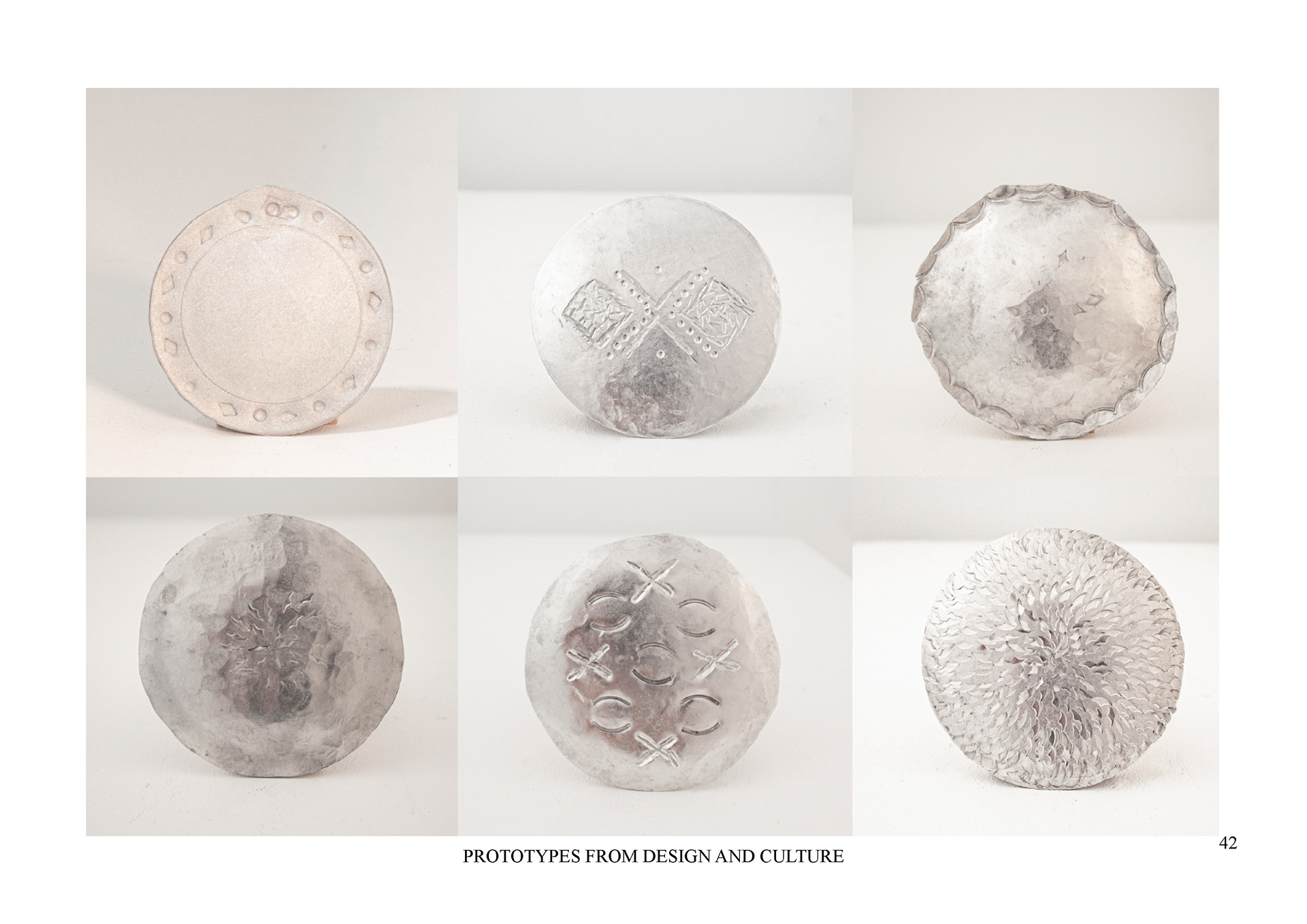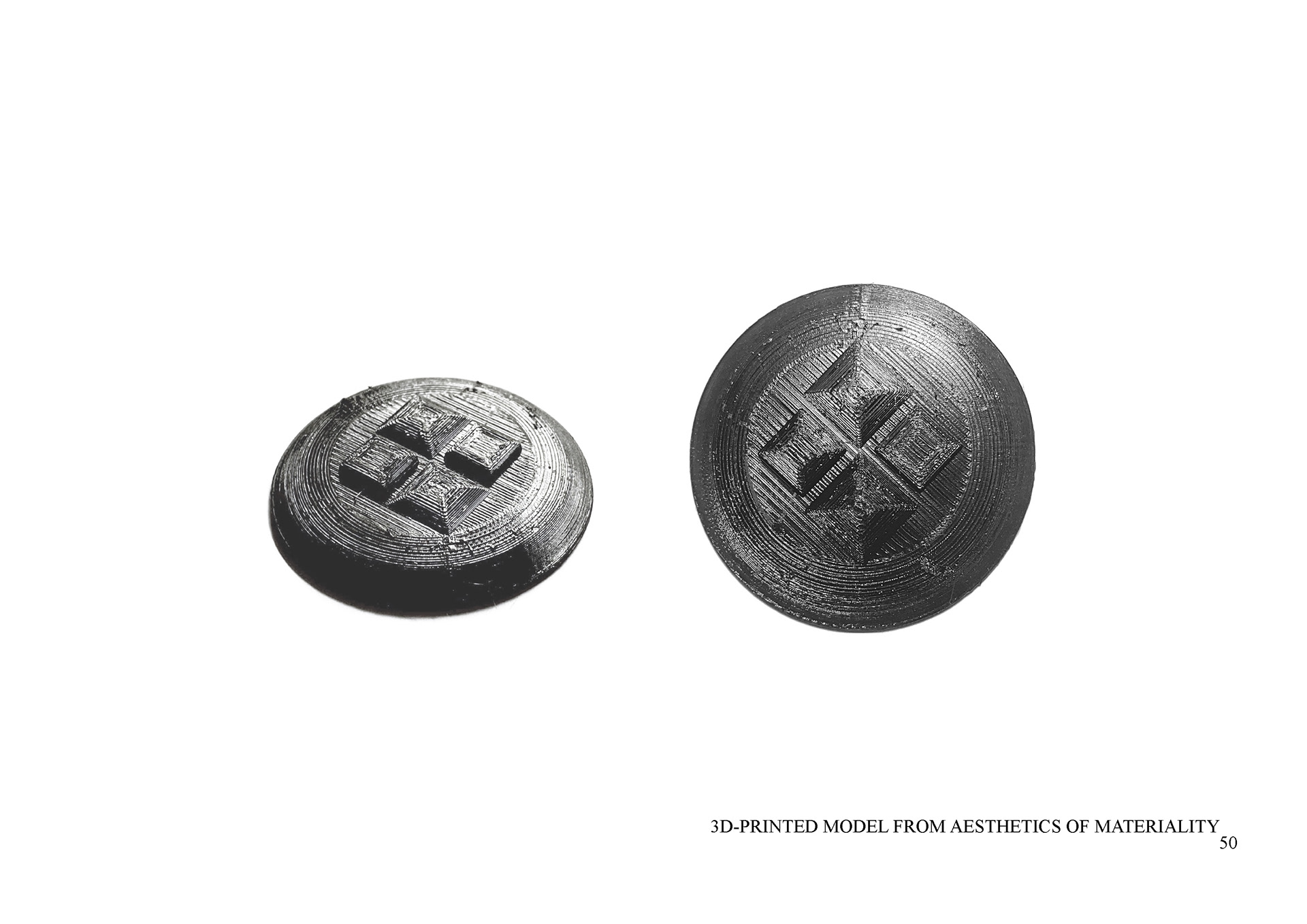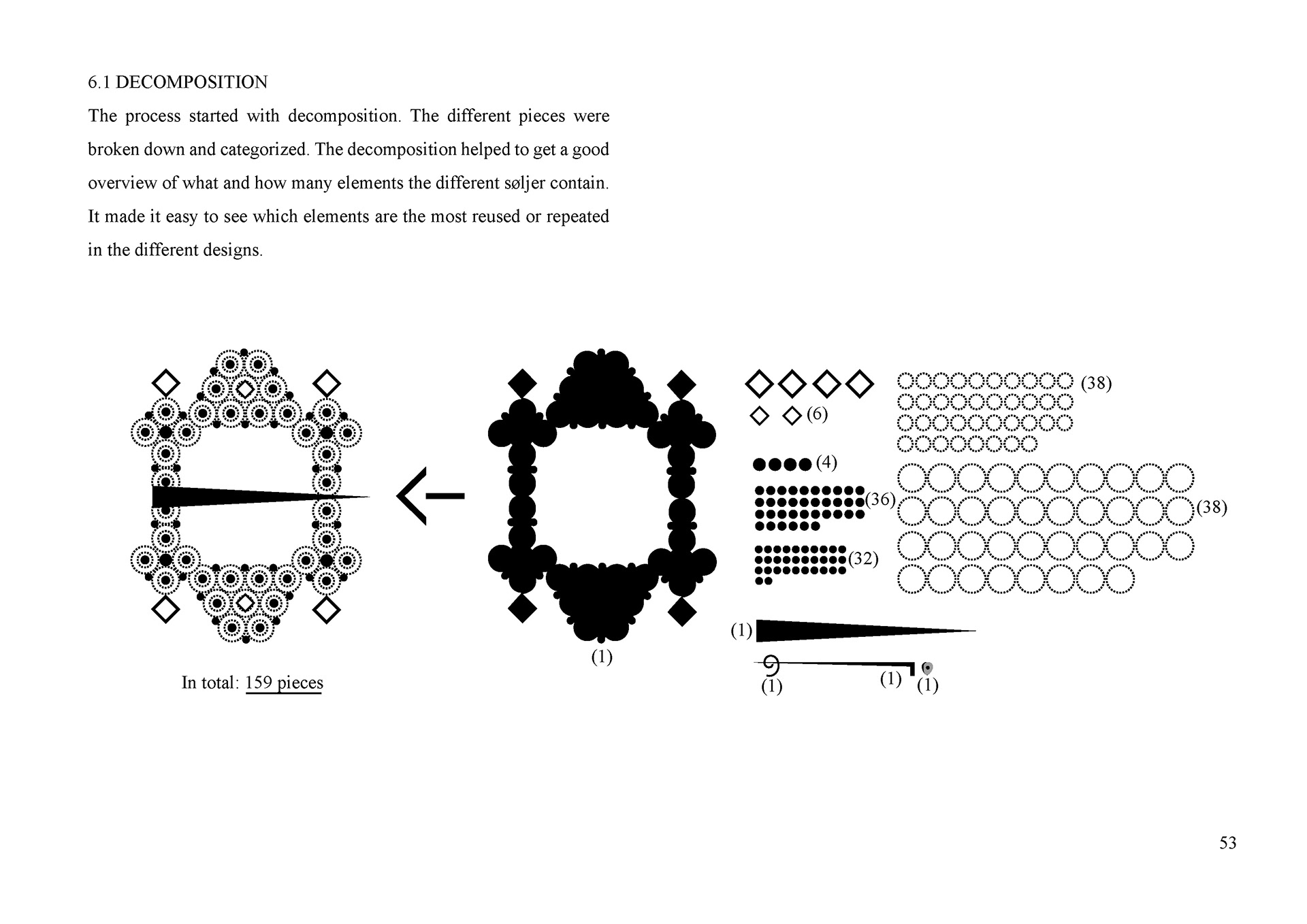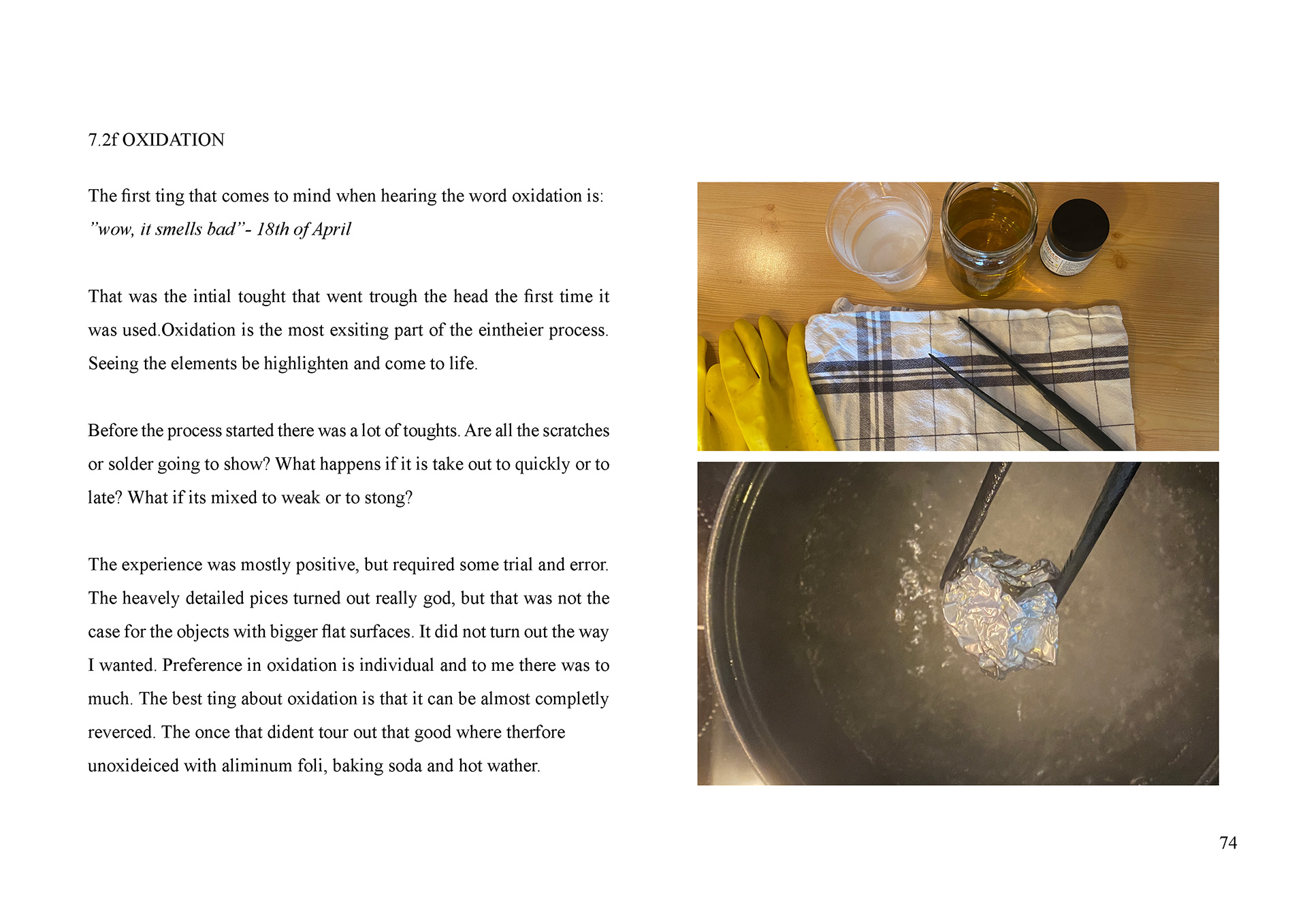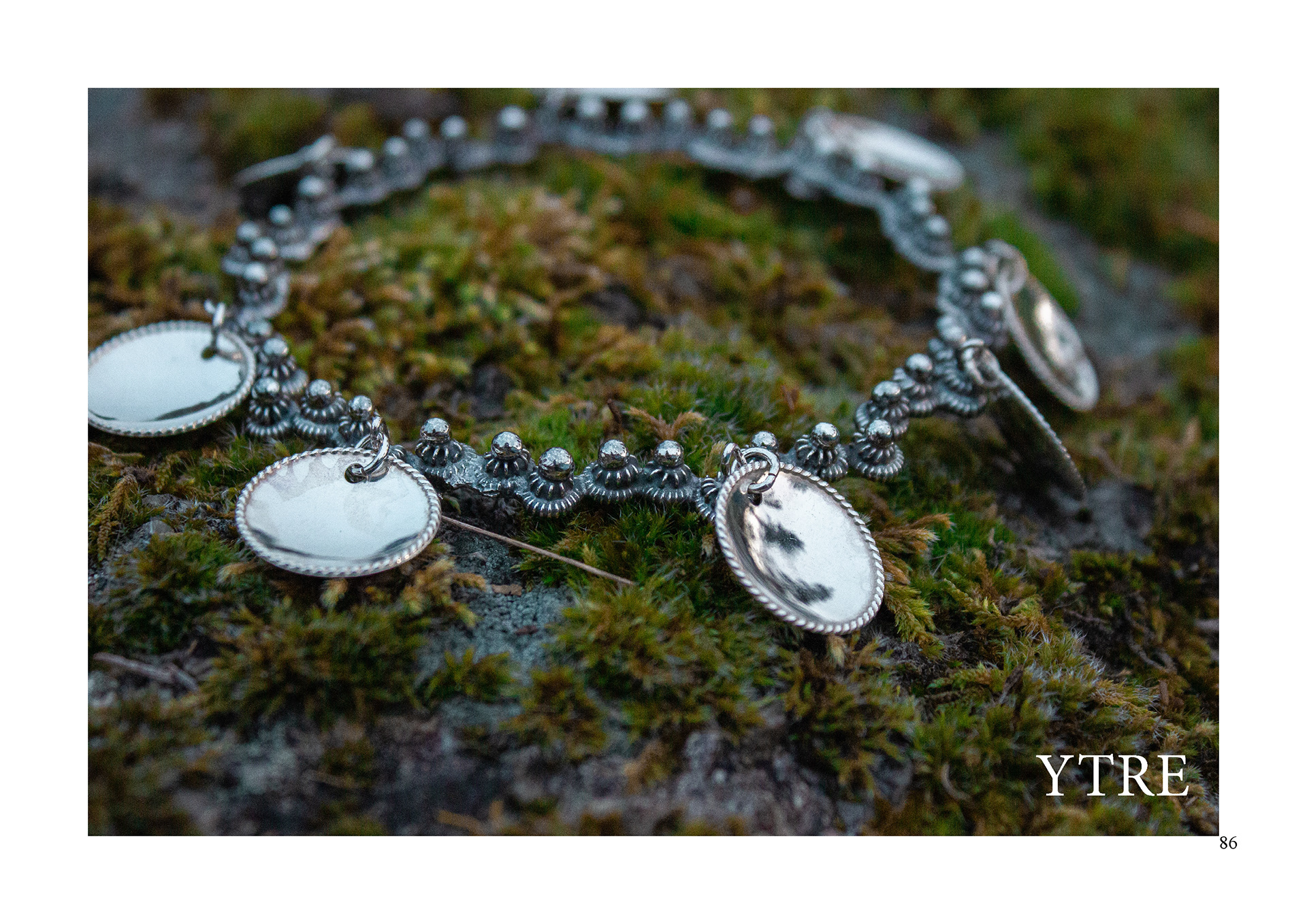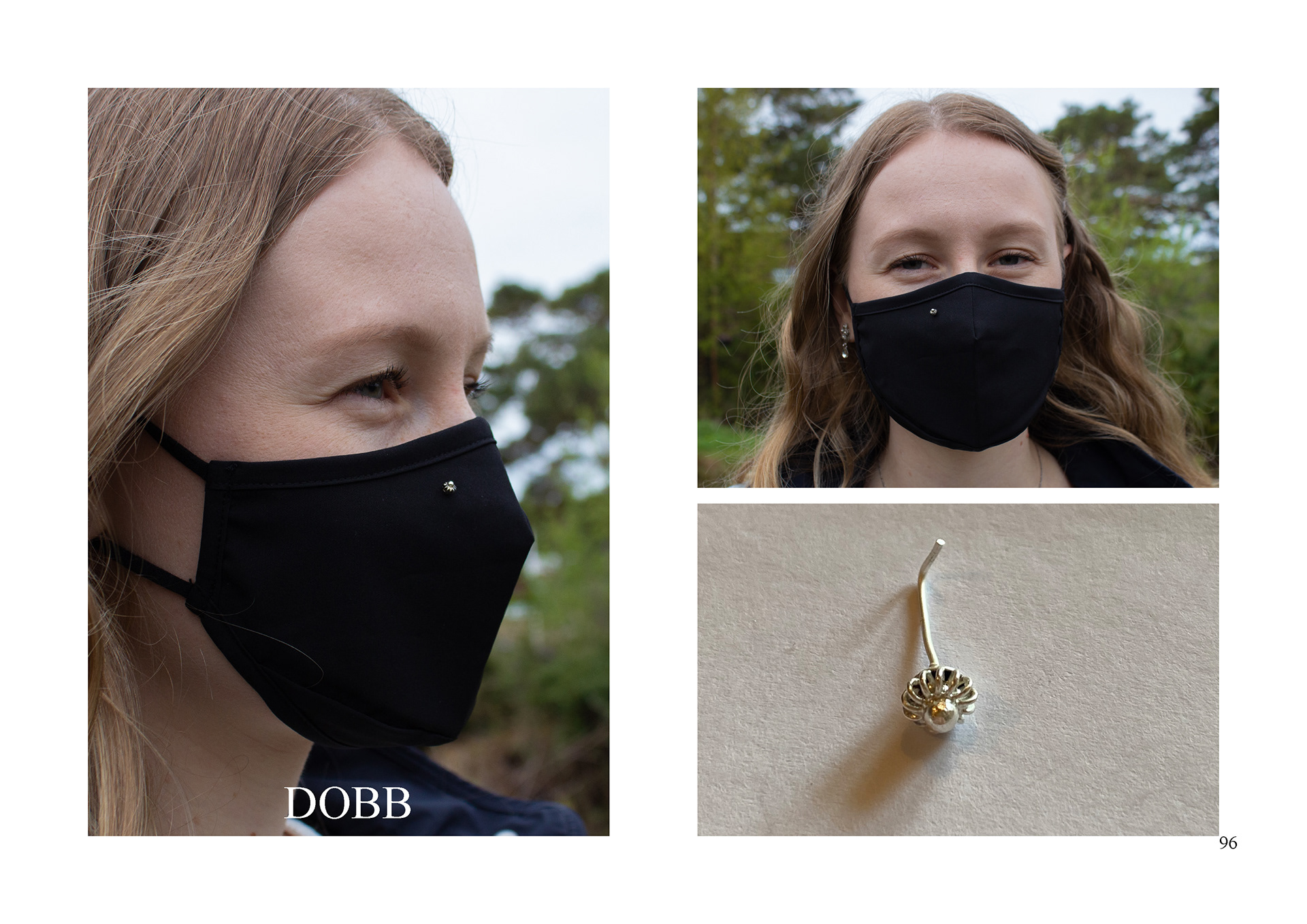Abstract
This thesis focuses on how søljer can be redesigned to be more universal and inclusive. The project was carried out using practice-based research.
The Sølje is a traditional Norwegian folk costume jewelry. Sølje today is only worn once or twice a year on very festive occasions together with bunad. It is handcrafted according to strong religious symbolism. Sølje and bunad are also very expensive, which means it is not affordable and available to a broader public.
Research of the traditional design and historical development and background was carried out. It showed an amazing rich use of cultural and religious symbols with norrøn and Christian meanings.
Further, data was collected using unstructured and in-depth interviews with people working in the sølje, bunad, and cultural heritage fields. The collected data were then analyzed in relation to the culture and tradition.
To understand techniques and materials being used, further qualitative interviews and literature studies were conducted. Studies of pieces of traditional jewelry were also examined. Sketches and Prototypes of sølje in copper and silver were made.
Work was done to create a more universal and inclusive design, which can be adopted to other and more frequent usage occasions, clothing, and people. Other “placement” on the body than the traditional was explored to fit with contemporary clothing.
Symbols were selected for the design work, which has multiple meanings. Symbols with strict religious and limited meaning were avoided in the design work.
To make physical pieces and to be able to conduct the thesis, the filigree handicraft was learned. The design aimed to make cultural heritage more usable in everyday life in today’s society.
The research and design work resulted in a collection of a total of nine jewelry pieces made to be inclusive and universal in both function and symbolic use. Many of the pieces can be used with other clothes. Making pieces gave insight into functional characteristics of the traditional designs and why it is made this way.
Read the thesis here







